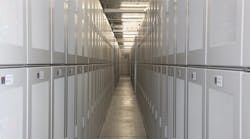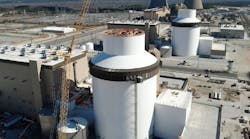It is a truism, but a well-proven one, that where goes California, so goes the nation. Eventually, in matters of environmental and energy policy, the nation tends to end up where California has already been. And while not all of this change is happening overnight, it also is not happening at the sometimes slow and steady pace familiar to utilities.
In California, we have only 13 years to meet mandates of 50% customer energy use from renewable sources and to reduce greenhouse-gas (GHG) emissions to 40% of what they were in 1990. Newly available technology, customers demanding more choices and a heightened awareness of climate change and air pollution are the urgent drivers.
The good news for us is that this energy model is one worth embracing, exploring and expanding. It is good for the air we breathe, good for our legacy for future generations and, ultimately, good for the industry. It will allow us to significantly improve system reliability and safety for all of our customers and our workforce, and it will fortify our cybersecurity.
Southern California Edison (SCE) anticipates that by 2020, we will see a 340% increase in private (rooftop) solar, from 213,000 today to 726,000. We anticipate a 600% increase in the number of electric vehicles in our service area, from 80,000 to 485,000. And we have contracted for a 570% increase in battery storage, taking us from 70 MW today to 400 MW, including 135 MW on the customer side of the meter.
This speed of change presents tremendous challenges — technological, economical and cultural — but with the challenges, there are also opportunities.
The pace of technological improvement in energy storage, for instance, is dizzying. In 2014, SCE opened its Tehachapi Storage Project, an 8-MW/32-MWh demonstration project that took several years to plan and build. Two years later, we brought four storage projects totaling 62 MW of energy storage online in just seven months. Two 10-MW hybrid systems installed at peaker plants are a lesson in how energy storage can enhance the value of generation while better achieving environmental goals. These systems allow us to rely on batteries while we power up the peakers so that the peakers do not have to run in advance of need (like running a hybrid car on its battery). This reduces start-ups by 50% and run-hours by 60%, which reduces pollutants, wear and water use, and by making the peaker plants more useful, enhances their value to the grid.
In California, 36% of GHGs and 95% of particulate emissions come from the transportation sector. The biggest challenges and biggest opportunities to meet state emission goals are going to be found here. In January, SCE filed its transportation electrification plan to invest more than $570 million in programs and infrastructure, with an emphasis on goods movement. A significant focus is on electrification at the Port of Long Beach, the second busiest port in the country and historically a major source of air pollution, especially in the disadvantaged communities that hug the port-adjacent freeways. SCE will request approval to add nearly 30,000 charging ports, which sounds huge, but is only roughly 30% of anticipated need by 2025.
And yet, even as we embrace the new technologies to clean the air, reduce GHGs and improve the customer experience, there are fundamental questions that we have to ask ourselves and that our regulators, stakeholders and customers also ask of us: How much and how fast? What is the appropriate pace of grid modernization? How do we prepare, smartly, to be ready for growth without overinvesting in an uncertain future?
To minimize long-term costs and maximize value, we need to integrate new clean energy solutions with annual planning processes. Technologies that improve reliability should be prioritized, and conversely, when looking at reliability issues, we should weigh new technologies — for instance, looking at whether distributed energy resources (DERs) in specific locations could be aggregated to provide grid services. Planning decisions should look at clean energy solutions as a way to avoid investing in technologies that are on their way to obsolescence. Annual planning should integrate load and DER forecasts, and could evaluate DERs as alternatives to some traditional grid infrastructure. And we should modernize our system architecture to facilitate flexibility and to accommodate the intermittency of DERs.
Working with the other two California IOUs, SCE has fashioned six principles for grid modernization:
- Enable customer choice
- Maintain and enhance the safety, security, reliability and resilience of the electricity grid
- Accelerate adoption of new distributed technologies
- Develop a more stakeholder-driven and transparent process
- Ensure safe and efficient integration of DERs into grid operations and planning
- Reduce emissions while decreasing energy usage.
What is the end game? I personally believe we are moving away from traditional central fossil generation and will end up with a distributed model with traditional remote generation providing support and backup. This is transformative.
It is humbling, perhaps intimidating and daunting to look into the future of a business that has not fundamentally changed in 125 years and predict that in the next 10 to 20 years it will change so drastically that we might not recognize it when looking back. But it is foolhardy to stand in front of the bus. Both business resiliency and environmental sustainability require us to get on board to meet customer and investor priorities. Please join us.


